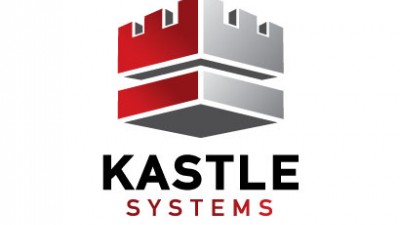How Security Systems Keep Our Kids Safe At School

It seems like every day we hear about another active shooter tragedy at a US school. It happens so often it's easy to become numb—but that's not an option. As Kastle Systems marketing VP Jennifer Graham points out, the very foundation of the education system is a "safe and nurturing environment." Schools need to step up their security measures against "increasing security vulnerabilities and concerns."
There are many potential avenues to take when securing schools, including video security, access control systems and visitor management protocols, but which one's right for certain schools? What kinds of threats should these schools be guarding themselves against? To get some clarity, we spoke with Kastle Systems education security specialist Tom Clater.
Bisnow: Protecting children and staff at schools is an undoubtedly critical task. Are there any security systems unique to schools and this challenge? Or are the systems mainly the same technologies utilized elsewhere for different purposes?
Tom Clater: Schools are faced with a unique challenge as they strive to balance the increasing need for safety and security with an open and welcoming learning environment. This special situation requires technology and security systems that integrate access control, video surveillance, visitor management, panic duress systems and monitoring. While these features exist elsewhere, in the school setting they must be brought together uniquely to ensure convenience and response protocols that are efficient, reliable and resilient.
Bisnow: Are the main threats to school safety external threats, like active shooters? If so, what about the internal threats, such as people stealing supplies and fights breaking out—can these security systems help on that front, too?
Tom: The tragic events at Sandy Hook Elementary spawned a heightened awareness of active shooter threats, yet comprehensive and well-designed security systems should assist schools in the deterrence and response to both external and internal threats. That means protection from threatening situations of various kinds, from active shooters to thefts, bullying, drug use and fights.
Bisnow: How can these systems be effectively implemented across a large campus? What are the unique challenges different sized campuses present, from a large university setting to a single-building school?
Tom: Whether a school is a one-room schoolhouse or a complex campus comprised of multiple buildings, the electronic security system should function as one integrated platform, accessible and controllable from anywhere. Cloud-based platforms scale to fit particular architectures and settings, ensuring school administrators are able to control their systems—whatever the size.
The more flexible the system, the more control it offers. Systems should be professionally designed, evaluated, monitored and managed on an ongoing basis to prevent gaps and outdated databases. Additionally, schools benefit from an end-to-end outsourced and managed approach—working with a partner mitigates the challenges size can bring.
Bisnow: What options do schools have when it comes to access control systems?
Tom: Electronic access control systems control the entry and flow to a building's interior, and many varieties are used in schools today. Proximity card readers, Bluetooth enabled readers that use app or web-based credentials, keypads, video intercom and visitor processing systems are just a few of the options schools have. Video intercom and remote release systems are commonly used to monitor and admit visitors who don't hold a credential.
Regardless of the type of device, the overall systems that process teachers, staff, administration, parents, students and visitors need to integrate with each other. They should expand without limit, always be backed up, tie into the fire safety systems and be customizable to meet the particular needs of the school they serve.
Bisnow: Do you think teachers should be trained in security protocol and self-defense, or should schools focus on hiring professional security personnel?
Tom: The most important aspect of security is training. A quality Emergency Operation Plan (EOP) is critical, and extensive training surrounding that plan helps ensure a planned and rehearsed response should a situation occur.
Training teachers in self-defense, or having them carry weapons, isn't a successful long-term strategy. However, schools do hire security personnel of both armed and unarmed types. It isn’t uncommon to see public school systems partnering with local police authorities to assign uniformed school resource officers (SROs) to their buildings. They are armed local police officers who have been trained on school security situations and work within the school on a daily basis.
If that strategic partnership doesn’t exist yet, many are hiring unarmed guards to help with the security of their buildings. Unarmed guards can either be full-time school employees or contracted from an outside guard service. At the end of the day, it's important to understand the approved practice is within your state and local municipalities.
Bisnow: What do you think the future holds for security in schools?
Tom: There is no one-size-fits-all approach. Schools will continue to strive to ensure a safe, efficiently run and convenient learning environment for their students. As threats in our world continue to evolve, schools will be challenged to identify fiscally responsible and non-intrusive, yet effective, security programs. And since technology is always improving, and most schools don't have a staff member responsible for overseeing the continuous upgrade of security software and systems, schools usually find partnering with security experts the best line of defense.
If you'd like to learn more about our Bisnow partner, click here.

